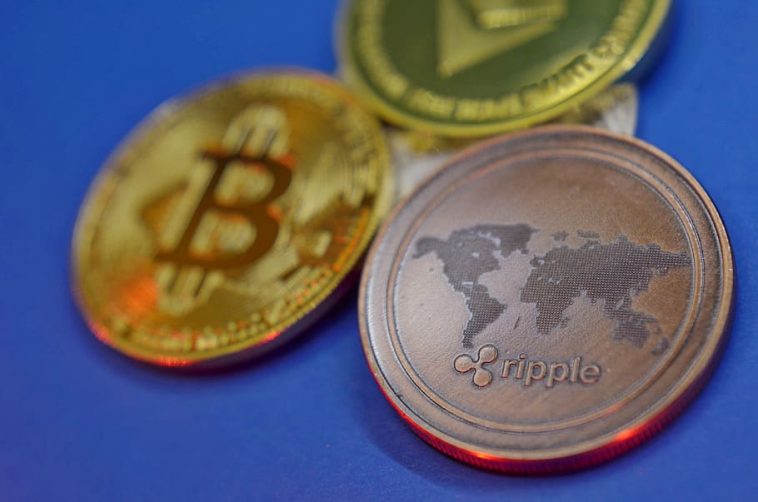The subject of Cryptocurrencies is very interdisciplinary. It comes up often when discussing fintech, remittances, and international finance. It makes many of us curious not only because of its potential significance in global finance, but also because of how it could have relevance to personal finance. Much of the available content is lamentably laden with jargon, and difficult to assimilate for non-experts. This series is meant to elucidate all things crypto from a layperson’s perspective. In this first part, we start by discussing digital currencies and crypto exchanges.
Fiat currency and cryptocurrency
In everyday life we are used to dealing with ordinary money, or to be more exact, fiat money. Currencies such as the USD and EUR are issued and controlled by central banks. They exist as bank notes printed on paper (or composite materials), which are exchanged for goods and services. Fiat currencies are held in bank accounts, and used as cash, credit/debit cards, checks, and so on. They can be freely exchanged for other fiat currencies in the forex market. The forex market itself is not a place, but a collection of many central banks. There are about 180 different fiat currencies in existence worldwide.
Cryptocurrencies or digital currencies are not issued by banks, but minted by computer programs. These are never printed as notes, and are usually never held in bank accounts. Instead, they are kept in digital wallets. There are more than 1,500 digital currencies in circulation, with more being created all the time. Only a small percentage of these are regularly traded in significant volumes. The oldest and best known of these is Bitcoin (BTC). Digital currencies can be used to buy goods and services, but their acceptance is comparatively very limited. You won’t be able to spend Bitcoin for example, to buy groceries at your local store. More commonly cryptocurrencies are bought and sold as investments, much like shares and stocks.
IPO and ICO
When a company wants to raise significant amounts of money for its business plans, it offers its shares for the general public to buy. It does this on a stock market, and the act of doing so is called ‘going public’, aka an IPO (initial public offering). Similarly digital currencies are first offered as ICOs (initial coin offering). The place to do this is usually a digital currency exchange, although other channels are also possible.
Of late the social media giant Facebook has announced plans to launch its own digital currency, which will be called Libra. It will be pegged to one or more fiat currencies, which is unusual in the crypto industry. The project is currently under some regulatory debate. However, when a corporation of such massive scale and resources as Facebook wants to enter the digital currency space, there is bound to be debate.
Pros and cons
Cryptocurrencies come with merits and demerits. Fiat currencies are subject to highly centralized controls by national banks. On the other hand digital currencies have a highly decentralized structure based on a distributed ledger system called blockchain. A government can deliberately devalue its fiat currency to provide short term stimulus to the national economy. The simplest way to do this is by printing more bank notes. This kind of government control and devaluation is just not possible with cryptocurrencies. Digital currency prices are usually controlled purely by the market forces of supply and demand. Notable cryptocurrencies such as Bitcoin are inherently deflationary.
Cryptocurrency transactions do not involve overheads associated with traditional banking channels. This is why cryptocurrencies have the potential to slash the costs of international money transfers down to nearly zero. This can result in an additional $45 billion reaching the world’s poor annually. However, the regulatory environment surrounding digital currencies is less than adequate. Some governments ban digital currency transactions outright, while many others remain skeptical. You can find out more about the challenge of regulating cryptocurrencies.
Crypto exchanges
A cryptocurrency exchange (or crypto exchange for short) is a business that facilitates the buying and selling of digital currencies. Although some exchanges have a broad range of offerings, the core usually consists of just three services. It lets people sell fiat currencies for cryptocurrencies, sell cryptocurrencies for fiat currencies, and exchange cryptocurrencies for other digital currencies. Some exchanges exclusively provide peer-to-peer trading. Crypto exchanges can be brick and mortar establishments, although more commonly they exist exclusively online. There are more than 300 active crypto exchanges worldwide. The largest of these in terms of traffic and trading volume is Binance.
Binance was founded in Honk Kong as recently as 2017. However, it moved on account of the Chinese government ban on cryptocurrency trading. Now Binance is headquartered in the EU member state Malta. In two short years Binance reached a market capitalization well in excess of a billion dollars. It trades in more than 100 different crypto tokens and has over 15 million users. Binance runs a program for open-source blockchain development. The exchange has developed its own blockchain, and offers a token called ‘Binance coin’.
In the next part of this series we’ll discuss some concepts which affect digital currency prices, as well as recent developments in the regulatory environment surrounding them.
About the author:
Hemant G is a contributing writer at Sparkwebs LLC, a Digital and Content Marketing Agency. When he’s not writing, he loves to travel, scuba dive, and watch documentaries.



